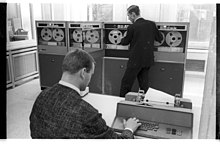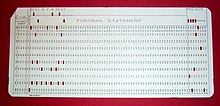Computer Operation Level-3 Suggestion V-5
Written TestComputer Operation Level-3 Suggestion V-5 by Job Edu BD
First, test yourself with the following MCQs, if you can’t do it, you can check the answer by clicking on the answer button.
Computer Operation Level-3 Suggestion V-5.
1.Which is not in MS Word?
- Italic
- Font
- Magic Tool
- Bold
2.Microsoft Word is ……… Software?
- Programming
- System
- Compiler
- Application
3. ………… in a presentation program?
- U-torrent
- Mozilla Firefox
- Slide Panel
- MS Power Point
4.MS Excel stands for………
- Micromax Excel
- Management Excel
- Microsoft Excel
- Microsoft Excess
5.Which of the Following is an example of page orientation?
- Landscape
- Superscript
- Subscript
- A4
6.Which One is not Unicode font?
- Sutonny Mj
- Nikosh
- Kalpurush
- sonar bangla
7.Which enables you to move to directly to specific in a document?
- Subdocument
- Bookmarks
- Cross-reference
- Outlines
8.Which is the right term of presentation page?
- Chat
- Image
- Clipart
- Slides
9.Which Function in Excel tells how many numeric entries are there?
- NUM
- SUM
- COUNT
- CHK NUM
10.Which do you press to force a page break?
- CTRL+ALT
- CTRL+BREAK
- CTRL+SHIFT
- CTRL+ ENTER
11.Which One Of the Following chart is not a search engine?
- Bing
- Yahoo
- Windows
12.How to use Format Painter Multiple Times?
- By Double Click on The Format Painter Icon
- Format Painter Cannot Be Use Multiple Times
- By Click on Lock Format Painter Icon
- None of Above
13.To get the ‘symbol’ dialog box, click on the ………?
- Home
- Layout
- Insert
- View
14.With Which view can you see how text and graphics will appear on the printed page
- Print Layout
- Normal
- Outline
- Web Layout
15. ……is the best alternative to MS Excel offered by Google Inc.
- Google Slides
- Google Sheets
- Google Files
- Google Keep
16.What is the shortcut key to close active document in Microsoft Word?
- CTRL+F4
- SHIFT+F4
- CTRL+SHIFT+F4
- CTRL+D
17.Which one is not a Function in MS Excel?
- SUM
- AVG
- MAX
- MIN
18.The process of transferring files from your computer to a computer on the internet is called.
- Uploading
- Forwarding
- ftp
- Downloading
19.Times new Roman, Cambria, Arial the example of………?
- Font face
- Clipart
- SmartArt
- Themes
20.In Excel, which one denoted a range from B1 through E5
- B1 – E5
- B1: E5
- B1 to E5
- B1 $ E5
Short Questions-
21.In a computer, most processing takes place in?
22.First page of Website is termed as?
23.To move a copy of file from one computer to another over a communication channel is called?
24.A fault in a computer program which prevents it from working correctly is known as?
25.Which button makes alphabets/letters in uppercase and lowercase and numbers to symbols?
26.When a computer is switched on, the booting process performs?
27.DOS stands for?
28.The unit KIPS is used to measure the speed of?
29.Which of the following commands is given to reboot the computer?
30.What is correcting errors in a program called?
1.Which is not in MS Word?
C.Magic Tool
2.Microsoft Word is ……… Software?
D.Application
3. ………… in a presentation program?
D.MS Power Point
4.MS Excel stands for………
C.Microsoft Excel
5.Which of the Following is an example of page orientation?
A.Landscape
6.Which One is not Unicode font?
A.Sutonny Mj
7.Which enables you to move to directly to specific in a document?
B.Bookmarks
8.Which is the right term of presentation page?
D.Slides
9.Which Function in Excel tells how many numeric entries are there?
C.COUNT
10.Which do you press to force a page break?
D.CTRL+ ENTER
11.Which One Of the Following chart is not a search engine?
D.Windows
12.How to use Format Painter Multiple Times?
A.By Double Click on The Format Painter Icon
13.To get the ‘symbol’ dialog box, click on the ………?
C.Insert
14.With Which view can you see how text and graphics will appear on the printed page
A.Print Layout
15. ……is the best alternative to MS Excel offered by Google Inc.
B.Google Sheets
16.What is the shortcut key to close active document in Microsoft Word?
A.CTRL+F4
17.Which one is not a Function in MS Excel?
B.AVG
18.The process of transferring files from your computer to a computer on the internet is called.
A.Uploading
19.Times new Roman, Cambria, Arial the example of………?
A.Font face
20.In Excel, which one denoted a range from B1 through E5
B.B1: E5
Short Questions-
21.In a computer, most processing takes place in?
Ans: CPU
22.First page of Website is termed as?
Ans: Homepage
23.To move a copy of file from one computer to another over a communication channel is called?
Ans: File Transfer
24.A fault in a computer program which prevents it from working correctly is known as?
Ans: Bug
25.Which button makes alphabets/letters in uppercase and lowercase and numbers to symbols?
Ans: Shift
26.When a computer is switched on, the booting process performs?
Ans: Power on self-test
27.DOS stands for?
Ans: Disk Operating System
28.The unit KIPS is used to measure the speed of?
Ans: Processor
29.Which of the following commands is given to reboot the computer?
Ans: CTRL+ALT+DEL
30.What is correcting errors in a program called?
Ans: Debugging
Try Now: Computer Operation Level-3 Vol-5
"You will pass just by asking the mentioned questions, it's not like that at all, but chances are upto 80% to get common. This is just a suggestion. This question is not copied from any board question"
A computer operator is a role in IT which oversees the running of computer systems, ensuring that the machines, and computers are running properly. The job of a computer operator as defined by the United States Bureau of Labor Statistics is to “monitor and control … and respond to … enter commands … set controls on computer and peripheral devices. This Excludes Data Entry.”
Overview
The position has evolved from its beginnings in the punched card era. A Bureau of Labor Statistics report published in 2018 showed that, in the public sector, a major employer of those categorized as Computer Operator was United States Postal Service. In the private sector, companies involved in data processing, hosting, or related services employed computer operators at an even higher rate. The states with the highest employment for computer operators, as of 2018, are: New York, Texas, California, New Jersey, and Florida.
Job role description
The former role of a computer operator was to work with mainframe computers which required a great deal of management day-to-day including manually running batch jobs; however, now they often work with a variety of different systems and applications. The computer operator normally works in a server room or a data center, but can also work remotely so that they can operate systems across multiple sites. Most of their duties are taught on the job,[citation needed] as their job description will vary according to the systems they help to manage.
Responsibilities of a computer operator may include:
- Monitor and control electronic computer and peripheral electronic data processing equipment to process business, scientific, engineering, and other data according to operating instructions.
- Monitor and respond to operating and error messages.
- May enter commands at a computer terminal and set controls on computer and peripheral devices.
- Excludes “Computer Occupations” (15-1100) and “Data Entry Keyers” (43-9021).
The role also includes maintaining records and logging events, listing each backup that is run, each machine malfunction and program abnormal termination. Operators assist system administrators and programmers in testing and debugging of new systems and programs prior to their becoming production environments.
Modern-day computing has led to a greater proliferation of personal computers, with a rapid change from older mainframe systems to newer self-managing systems. This is reflected in the operator’s role. Tasks may include managing the backup systems, cycling tapes or other media, filling and maintaining printers. Overall the operator fills in as a lower level system administrator or operations analyst. Most operations departments work 24×7.
A computer operator also has knowledge of disaster recovery and business continuity procedures. Formerly, this would have meant sending physical data tapes offsite, but now the data is more than likely transmitted over computer networks.
Specializations
Console operator
A console operator interacts with a front panel or a multi-user system’s console
- entering system commands via a keyboard
- entering commands for a subsystem, e.g., HASP, via a keyboard
- replying to requests for information
- taking actions such as mounting computer tapes that were “pulled” by a tape librarian
- supervising a tape operator, especially when there is a non-specific mount request.
These individuals would be trained to use specialized equipment related to their duties.
Beyond the IBM System/360 era
One example of specific hardware used by a console operator is the IBM 3066 Model 2 system console, which included a light pen[citation needed] as an interface device. Other then-new features were:
- replaced “most switch, pushbutton, and indicator functions”
- as with the 165’s Model 1, had a microfiche document viewer, a feature introduced for the 360/85’s console.
A console printer (up to 85 characters per second) to provide hard copy was optional when the console was in display mode, and required when it was in printer-keyboard mode.[citation needed]
Peripherals operator
A peripherals operator uses dedicated peripheral equipment connected to computer(s) such as printers, scanners, or storage devices for data transfer to and/or from computers.
Tape operator

Historically, tape operators were in charge of swapping out reels of paper tape, reels of magnetic tape or magnetic tape cartridges that stored computer data or instructions.
Card reader operator

Depending on the type of card reader, either the “9-edge” or the “12-edge” was towards the card reader operator inserting the cards – but the deck of cards was always placed face down.
The United States Army’s wordings were:
- Load cards in hopper face down, 12 edge out, column 1 to the left (1977)
- Place cards in hopper face down with 12 edge to operator (1981)
- 12 edge / face down : IBM orientation.
- nine-edge (also face down) : some other card readers.
Printer operator
In addition to filing or delivering computer printouts, a printer operator at times loads standard or, as directed by a console operator or a remote console, specialized forms.
Tab operator

The tab operator (short for tabulating) would be responsible for preparing and operating tabulating machines to produce statistical results. Hardware such as the IBM 08x sorter series[citation needed] were called tabulating equipment. The 1980 census specifically counted Tab operators (“Tabulating-machine operator”).
Tape librarian
A tape librarian is responsible for the management, storage, and reporting involving data storage tapes. The tape librarian would develop and/or maintain an organization system for the storage and retrieval of tapes, and assist in disaster recovery. Additionally, the librarian would ensure the integrity of the tapes, and submit recommendations for replacement when needed. Some examples of equipment a tape librarian may work with are the IBM 3850.
Post review
Finding Your Post
NSQF / NTVQF Computer Operation Level-3 Suggestion V-5, NSQF NTVQF, Computer Operation Level-3 Suggestion V-5, Job Edu BD, NSDA BTEB, NSDA / BTEB Suggestion Vol-1
NSQF / NTVQF Computer Operation Level-3 Suggestion V-5, NSQF NTVQF, Computer Operation Level-3 Suggestion V-5, Job Edu BD, NSDA BTEB, NSDA / BTEB Suggestion Vol-1
NSQF / NTVQF Computer Operation Level-3 Suggestion V-5, NSQF NTVQF, Computer Operation Level-3 Suggestion V-5, Job Edu BD, NSDA BTEB, NSDA / BTEB Suggestion Vol-1
NSQF / NTVQF Computer Operation Level-3 Suggestion V-5, NSQF NTVQF, Computer Operation Level-3 Suggestion V-5, Job Edu BD, NSDA BTEB, NSDA / BTEB Suggestion Vol-1
NSQF / NTVQF Computer Operation Level-3 Suggestion V-5, NSQF NTVQF, Computer Operation Level-3 Suggestion V-5, Job Edu BD, NSDA BTEB, NSDA / BTEB Suggestion Vol-1
NSQF / NTVQF Computer Operation Level-3 Suggestion V-5, NSQF NTVQF, Computer Operation Level-3 Suggestion V-5, Job Edu BD, NSDA BTEB, NSDA / BTEB Suggestion Vol-1



